Sunday afternoons were a sad time for me as a kid. It meant the weekend was nearly over and I despised school. It also meant that we would be taking my nan home after she had spent the weekend with us. No fun at all! The great news, though, was that dad would drive us home via The Fort Road. The Fort Road ran alongside an old fort at Tilbury in Essex that dates back to King Henry VIII, who created the original structure to defend against French invaders. The fort was given a 1588 upgrade when it was visited by Queen Elizabeth I where she addressed the troops in their successful endeavours to repel the Spanish Armada. The land surrounding Tilbury fort was open and unkempt common land, scribbled with drainage ditches. It was a chance to see wildlife. Winter afternoons were particularly exciting, because every few years we would see the jewel in the crown – a Kingfisher. But one rare day the call went up from my dad “Stonechat!”

At that time the Stonechat was an uncommon bird and certainly not a bird that we would see in Essex. We had to travel for a few hours South West to have a chance of seeing them on the moors and heaths of the English coast. The wasteland that borders the mud-oozing Thames was not Stonechat habitat.

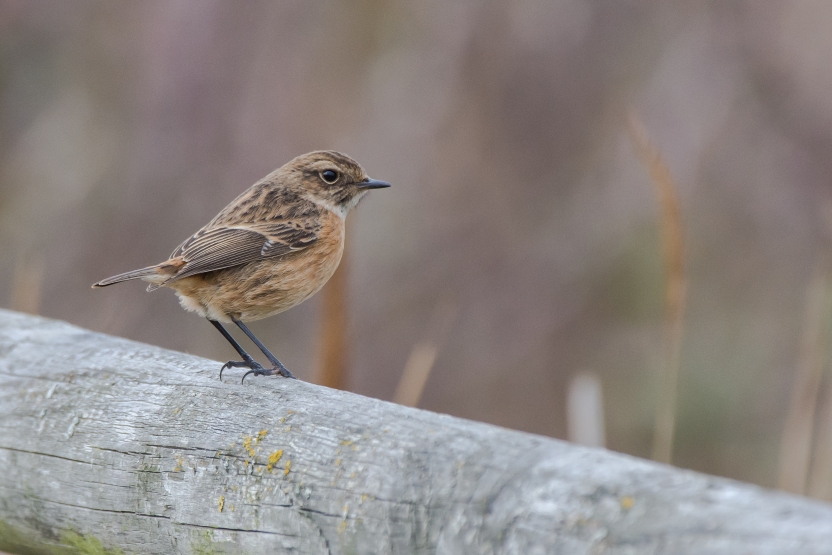
Fast forward to today. A concerted effort has been made to establish a corridor of nature parks that track the north bank of the Thames to the Estuary. One of these parks is Thameside Nature Park at Mucking. When I was a kid this 120 acre site was a huge landfill that insatiably swallowed the foul smelling trash excreted by London’s sprawl. Covered over and allowed to be reclaimed by nature, the site at Mucking is now home to many species of birds, mammals, reptiles and insects.
One of the birds that has taken advantage of the nature corridor is the Stonechat. Every time I visit the Mucking site I see them. That classic Stonechat sight of a small bird perched on the tallest plant in open scrubland. This is a well dressed bird that knows that it would not be appropriate to hide its beauty in the undergrowth. Better to perch high and sway in the river breeze where everyone can see you.
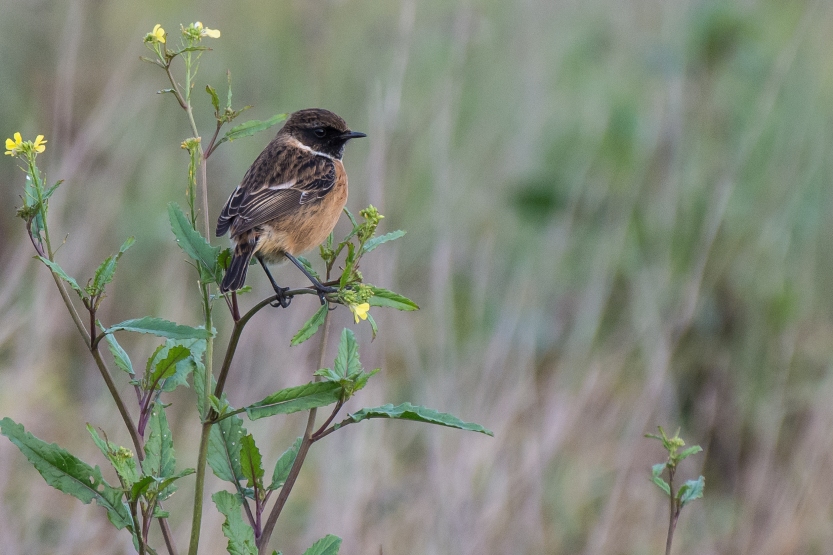
The Stonechat is a small, smart looking bird, with short wings and a compact tail. It is ever so slightly smaller than the more famous UK red-breasted bird, the European robin. It would be easy to imagine the two species as related, but the Stonechat is more closely related to the flycatchers.
The spread of the Stonechat has outpaced the field guides and even the RSPB website, all of which fail to identify Stonechat distribution as a year-round resident along the Thames corridor.
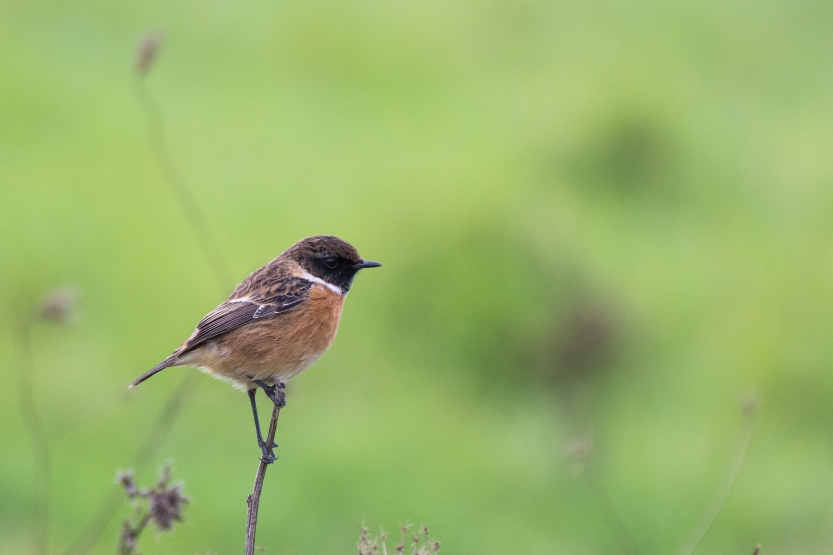
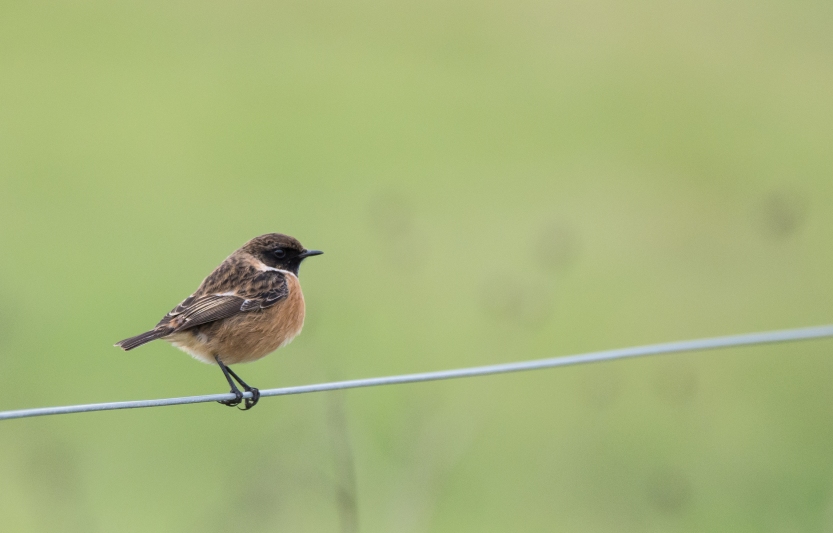
On a recent visit home I stumbled upon another local colony of Stonechats; this time they were at Coalhouse Fort. Another old fort that is situated between Tilbury and Mucking. By following social media posts it is clear that these birds are being seen on every area of open and unmanaged grassland from East London to Shoeburyness, where the Thames spills out into the English Channel.
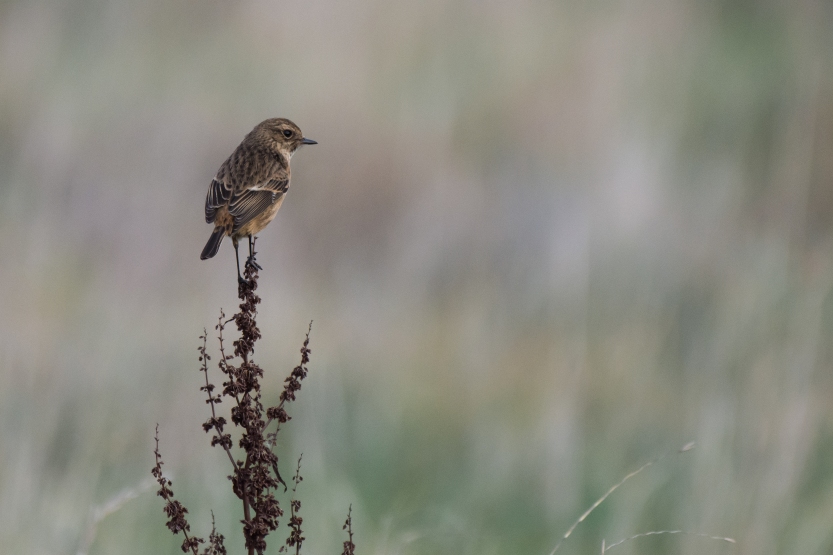
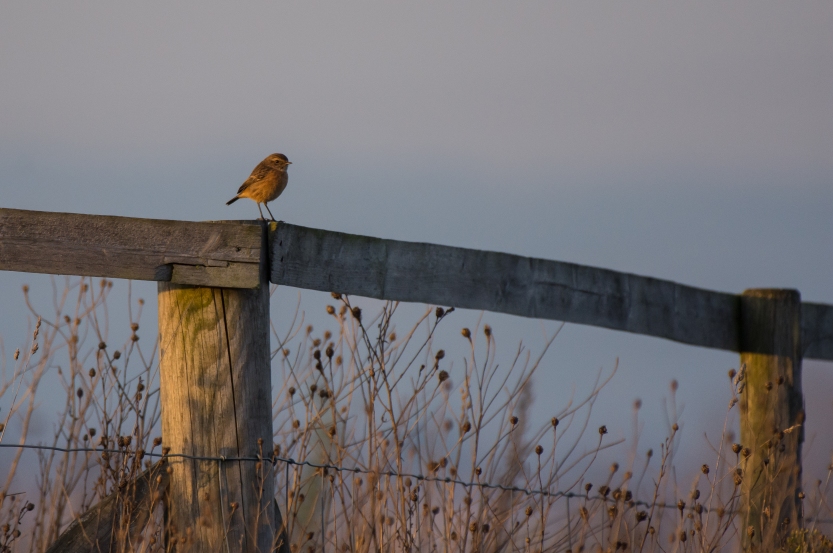
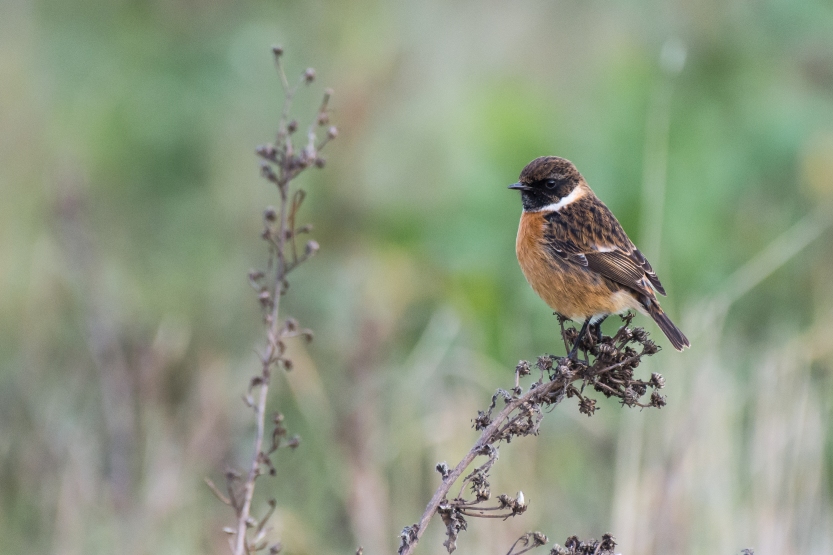
The land surrounding Tilbury Fort is becoming more closed-in as the port of Tilbury expands it’s warehousing. The drive along the Fort Road is not what is used to be. But this is one of the rare occasions when the loss of a habitat has been compensated by the creation of more and better habitat for Stonechats. Now the roles are reversed in my family as it is me that drives my mum and dad to Mucking but today we are almost guaranteed to see Stonechats, and even better, we can do so while devouring a piece of cake in the Nature Center. What better way to celebrate the rise of the beautiful Stonechat in Essex.
Join the conversation below. Where are you seeing Stonechats? Have you noticed and increase or decline in your area? What are your memories of the forts of Tilbury and East Tilbury? 👇👇👇
** Like the article? Share give it a Tweet or post it on Facebook. If you enjoyed this post, please take a look at the rest of my work and consider following Incidental Naturalist. If you don’t have a WordPress account you can follow via email. I’m not going to try to sell you anything and there will be no spam **
Categories: United Kingdom
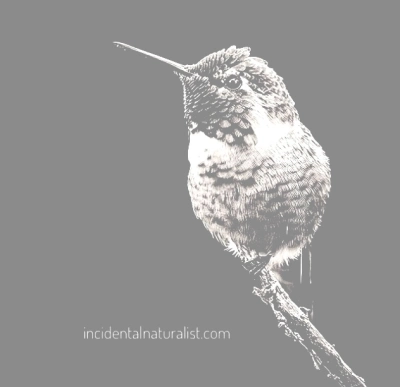


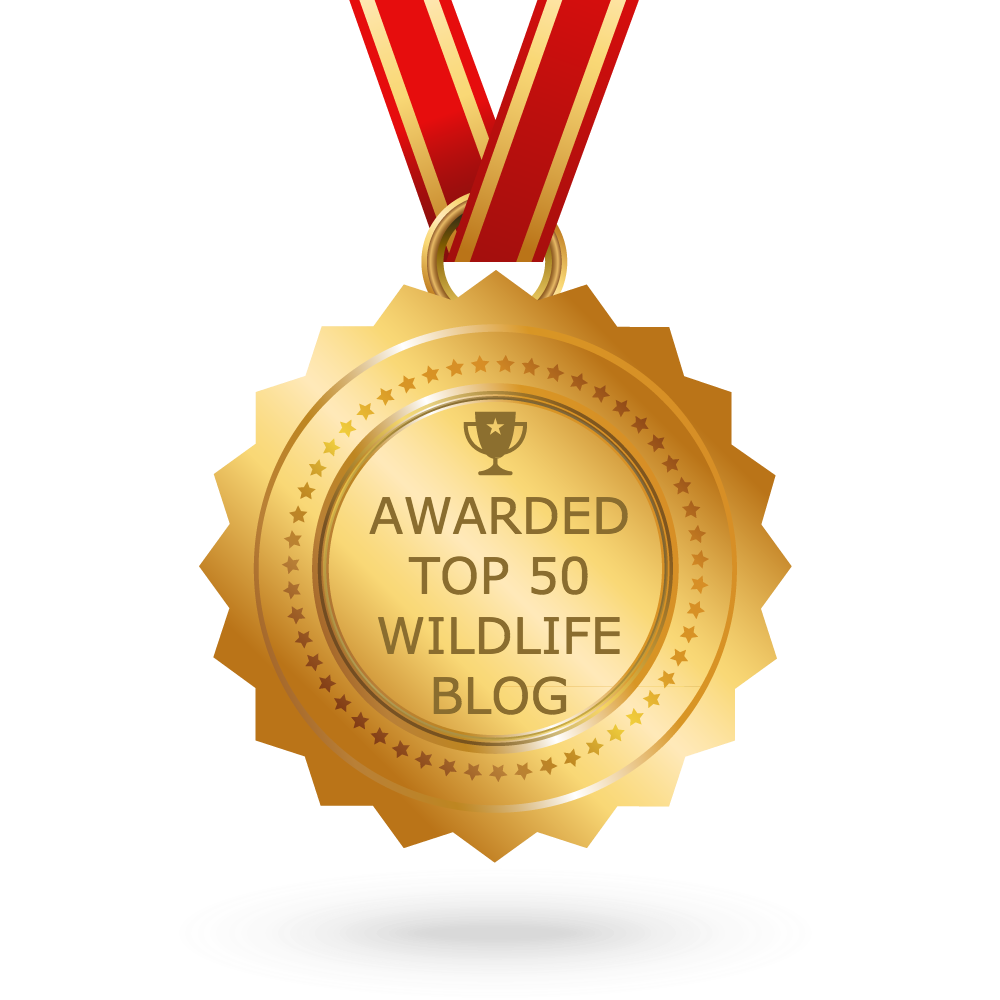

David – Once again I enjoyed your observations of the world around us. Living in the US it is always a pleasure to learn about the native birds from other places.
LikeLiked by 4 people
Thanks for the kind words. I wasn’t sure if people would be interested in a tiny little birds from over the pond. 😊
LikeLiked by 3 people
Gorgeous! I love your photo stories!
LikeLiked by 2 people
Thank you so much! 😊
LikeLiked by 1 person
Gorgeous photos! I think my favourite must be the one labeled “Female Stonechat in that classic Stonechat position”, but they’re all so sharp and beautifully illustrative. It’s not a bird I’m familiar with but if I ever get back to England I’ll now be sure to recognize them.
Alison
LikeLiked by 2 people
Thanks Alison! When you see a small bird move and it lands on the tallest stem in a flat open area, you can be pretty sure you’ve spotted a Stonechat. 😊
LikeLiked by 1 person
Thanks David, I love the story of restoration of habitat leading to return of species previously absent. We have some examples in Western Australia but often have to also have active feral animal management inplace.
LikeLiked by 1 person
It is good to hear you have restoration going on in Western Australia. It is amazing how quickly wildlife returns. I know that feral animals is a huge problem in Australia, and in many other places. Managing ferals is almost more difficult than restoring habitat.
LikeLiked by 1 person
So love your posts, David! Great photo captures of these lovely little birds perched on fences and plants; vivid in detail and color, makes me feel I’m there. Also great to hear about an increase in their numbers from active conservation efforts. Cheers to that!
LikeLiked by 2 people
Thank you, Lara! 🙏 It is great to write about habitat restoration and thriving indigenous wildlife. The world needs a little bit more good news about nature and examples of what can be achieved with some effort. 😊 Plus, they are gorgeous!
LikeLiked by 2 people
Lol, they are gorgeous! And couldn’t agree more on needing more good news; helps us achieve more, knowing good things can be accomplished “) Thanks again, David!
LikeLiked by 1 person
awwwww so cute!! 😍 I was going to say, they are similar to the red-breasted robin and then you mentioned it lol. But yes, so cute. I think in this case the female is even a little more attractive than the male, though both are definitely worth a second look. Now I feel the need to look up (listen to) their song online. Wonderful piece as always David. I always look forward to your posts.
LikeLiked by 1 person
Thank you, Tara! They are beautiful fat little birds. I’m glad I’ve inspired you to learn a little more about one of my local birds. 😊
LikeLiked by 1 person
Yes! You’re such a great writer and you share the best photographs. Thank you for that!! 💕
LikeLiked by 1 person
Very kind words, Tara!
LikeLiked by 1 person
Enjoyed seeing your lovely photos and reading your post about these beautiful little birds. 🙂
LikeLiked by 1 person
Thank you, Ann! 🙏
LikeLiked by 1 person
I had no idea this was all on the doorstep!
Sorry you didn’t like going back to school- if only we all knew then what we know now ! Xx
LikeLiked by 1 person
You do now! You will be able to go out searching for Stonechats at the Thameside Nature Park. There is cake there, too! Yeah, I really didn’t enjoy school. If I’m honest I just didn’t take instruction and structure well and I still don’t. Neither does my 1st Grade son! 😳 Indeed, if we only knew…x
LikeLike
I get to enjoy these birds during winter season here in India.
LikeLiked by 1 person
Thanks for the information. I didn’t realise that they are in India.
LikeLike
These birds are quite striking. We see them in Dorset. RSPB Arne and Bradbury Rings both have open ground where they can be seen perched on shrubs. Over the summer I visited Rock in Cornwall and found them on the heathland overlooking the estuary. Enjoyed the post.
LikeLiked by 1 person
Thanks Stephen! I used to spend my childhood holidays in Dorset, Devon or Cornwall and I remember seeing Stonechats there. At that time I didn’t imagine that they could become a relatively common sight in Essex.
LikeLiked by 1 person